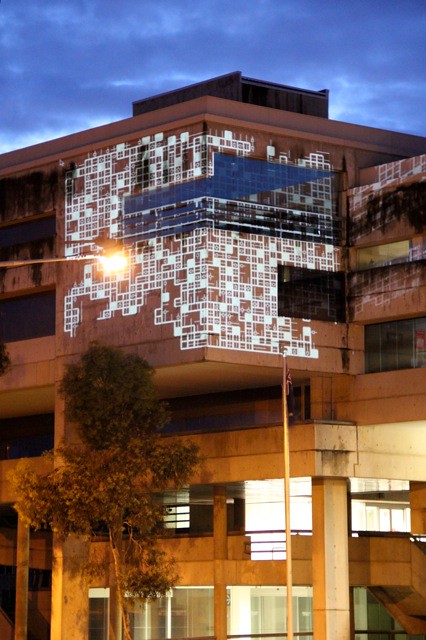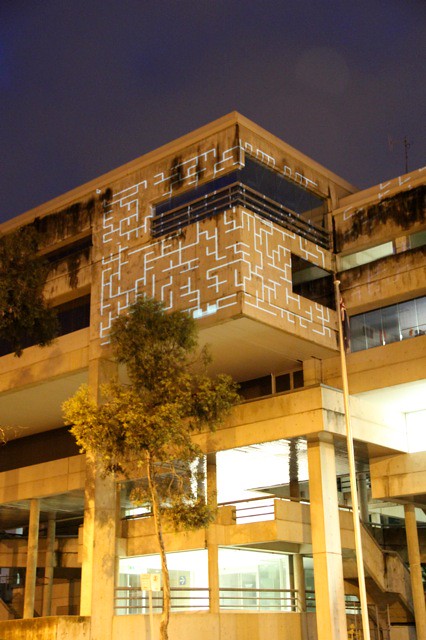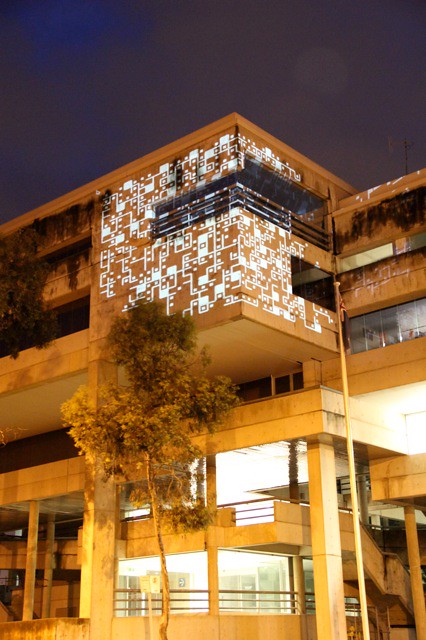Here are some photos from this weeks dry run. Everything seemed to work pretty well, and we even caused enough interest to almost cause a couple of passing cars to crash. David Bouchard's
Keystone library for Processing worked a treat - it was easy to accurately map to the building. Two issues however became apparent.
 |
| Generic City C6 - dry run, photographer Mitchell Whitelaw |
The first is that growth was too fast - this is a quick fix. My perspective seeing Generic City close up on a screen and having an intimate knowledge of the geometry is significantly different to someone viewing it on a building from a distance and perhaps in a state of distraction. I deliberately made it fast because I was worried about viewers getting bored, and I wanted the dynamic nature to be apparent at a glance from passerbys in cars or on the bus. However the buses have now been rerouted and our primary audience anyway is really guests to the projection event and perhaps patrons of the
Labor Club walking past. If someone in a car is enticed it is easy for them to pull over.
The second issue is a bit more complex. How to work with the windows. We had hoped that the light projection would transmit through the windows, however it shows up - particularly where the building is reflected in the window (and of course on the rails), and it reflects on to other parts of the building. There are a couple of ways to approach the windows: the projection can be blocked at the windows either by drawing black rectangles over the top of the windows or by stitching together many (7+) keystone windows around the windows; or, and this is preferable because it will give neater edges than cropping, growth can be blocked at the windows. To prescribe accurately no growth zones will require a system of boundaries that can be manipulated live on site similarly to the keystone windows.
 |
| Generic City C6 - dry run, photographer Mitchell Whitelaw |
 |
| Generic City C6 - dry run, photographer Mitchell Whitelaw |



No comments:
Post a Comment